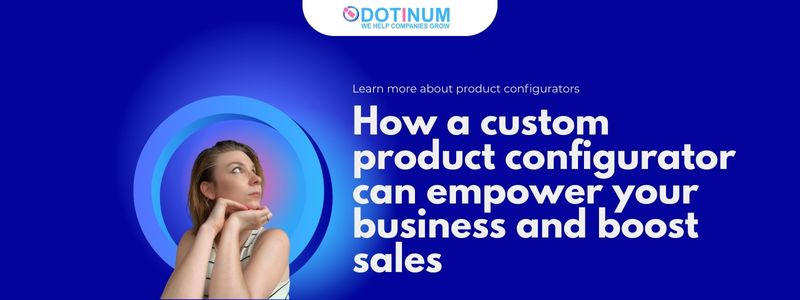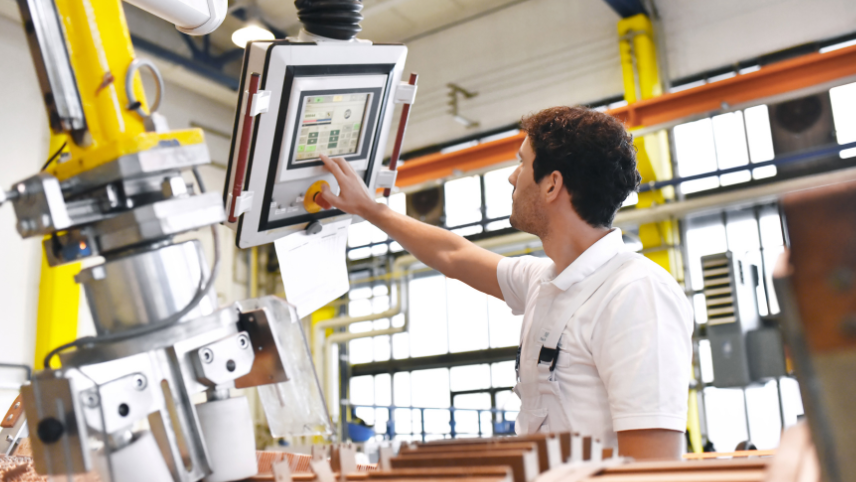TL;DR Product configurator and product configuration may sound alike, but they serve very different roles in e-commerce and manufacturing. This article explains the difference, shows how they work together, highlights industry examples, and helps you decide which solution your business needs. You’ll also learn about types of configurators, implementation considerations, and the real benefits for both e-commerce and manufacturing.
The terms product configurator and product configuration sound nearly identical, yet they represent fundamentally different concepts in e-commerce and manufacturing. Understanding this distinction is crucial whether you’re building an online store, developing custom product configurator software, or optimizing manufacturing processes.
What is a product configurator?
A product configurator is an interactive software tool that enables customers to customize products before purchase. This customer-facing application serves as the bridge between buyer preferences and product possibilities.
Key features of product configurators
Visual customization options:
- color selection with real-time preview,
- size and dimension adjustments,
- material and texture choices,
- accessory and feature add-ons,
- price updates based on selections.
Advanced visualization capabilities:
- 2D product views for basic customization,
- 3D product visualization for immersive experience,
- augmented reality (AR) integration,
- 360-degree product rotation,
- real-time rendering of changes.
Industries using product configurators:
Automotive sector: Car manufacturers like BMW, Mercedes, and Tesla use sophisticated configurators allowing customers to choose everything from paint color to interior materials and engine specifications.
Furniture and home decor: Companies like IKEA and Wayfair offer configurators for modular furniture, allowing customers to visualize different configurations in their space.
Electronics and technology: Dell, HP, and Apple provide configurators for laptops and computers, enabling specification customization.
Fashion and apparel: Nike and Adidas offer shoe customization tools, while companies like Indochino provide suit configurators.

What is product configuration?
Product configuration represents the backend process and business logic that governs how products can be assembled, customized, and manufactured. This system operates behind the scenes, ensuring every customer selection results in a viable, manufacturable product.
Core components of product configuration:
Business rules engine:
- Compatibility matrices defining which options work together.
- Constraint management (technical and business limitations).
- Pricing logic and calculation rules.
- Inventory availability checks.
Data management:
- SKU generation for unique product variants.
- Bill of Materials (BOM) creation.
- Technical specifications compilation.
- Integration with ERP and manufacturing systems.
Validation processes:
- Configuration feasibility checks.
- Quality assurance protocols.
- Compliance verification.
- Cost optimization algorithms.
Key differences between product configurator and product configuration
| Aspect | Product configurator | Product configuration |
| Primary users | Customers, sales teams | Internal systems, engineers |
| Interface | Visual, interactive | Data-driven, algorithmic |
| Purpose | Enable customization | Ensure feasibility |
| Output | Customer selections | Manufacturing instructions |
| Focus | User experience | Business logic |
How they work together
The relationship between product configurators and product configuration creates a seamless custom product experience:
Step-by-step process:
- Customer interaction: User engages with the product configurator interface
- Real-time validation: Product configuration system checks compatibility
- Visual feedback: Configurator displays valid combinations and pricing
- Final validation: Configuration system ensures manufacturability
- Order processing: Generated specifications feed into production systems
Integration points:
E-commerce platforms: Modern product configurators integrate with platforms like Shopify, Magento, and WooCommerce, while configuration systems connect to inventory management and fulfillment solutions.
Manufacturing systems: Configuration data flows directly into MRP (Material Requirements Planning) and ERP (Enterprise Resource Planning) systems, streamlining the order-to-delivery process.
Real-world examples across industries
Case study: automotive industry
Challenge: Tesla needed to allow customers to configure vehicles while ensuring every combination could be manufactured efficiently.
Solution: Their configurator presents options in a logical sequence, while the configuration system maintains complex rules about battery compatibility, manufacturing capacity, and regional regulations.
Result: Reduced configuration errors by 80% and improved customer satisfaction scores.
Case study: B2B manufacturing
Challenge: An industrial equipment manufacturer struggled with complex product variants and lengthy quote processes.
Solution: Implemented a B2B product configuration solution with guided selling features and automated pricing.
Result: Quote generation time decreased from 3 days to 30 minutes, while quote accuracy improved by 90%.

Benefits for e-commerce and manufacturing
E-commerce advantages:
Enhanced customer experience:
- Increased engagement through interactive customization
- Reduced purchase hesitation with visual confirmation
- Higher average order values through upselling opportunities
Operational efficiency:
- Automated quote generation
- Reduced customer service inquiries
- Streamlined order processing
Manufacturing benefits:
Production optimization:
- Elimination of unbuildable configurations
- Improved resource planning
- Reduced waste and rework
Quality improvement:
- Consistent product specifications
- Reduced human error in order processing
- Better compliance management

Types of product configurators
2D product configurators
Basic visual configurators suitable for simple products with limited customization options. Common in apparel and basic furniture customization.
3D product visualization configurators
Advanced configurators offering immersive experiences. Ideal for complex products like vehicles, machinery, or architectural elements.
Augmented reality (AR) configurators
Cutting-edge solutions allowing customers to visualize products in their real environment. Particularly effective for furniture, home decor, and architectural products.
Guided selling configurators
Rule-based configurators that guide customers through complex configuration processes. Essential for technical B2B products with numerous interdependencies.
Implementation considerations
Choosing the right solution:
For small e-commerce businesses:
- Start with simple 2D configurators
- Focus on core customization options
- Ensure mobile responsiveness
For enterprise organizations:
- Invest in comprehensive configuration management
- Prioritize system integration capabilities
- Plan for scalability and global deployment
Cost factors:
Implementation costs for custom product configurator software typically range from $50,000 for basic solutions to $500,000+ for enterprise-grade systems. However, ROI studies indicate payback periods of 12-18 months through increased sales and operational efficiency.
Why this matters for your business
Understanding the distinction between product configurators and product configuration helps organizations:
Improve customer experience: By investing in intuitive configurator interfaces while ensuring robust backend configuration management.
Reduce operational costs: Through automation of complex quotation and specification processes.
Scale efficiently: By building systems that can handle increased product complexity and customer volume.
Maintain quality: Through consistent application of business rules and manufacturing constraints.
Summary
- A product configurator is the customer-facing tool that enables product customization,
- while product configuration is the backend process ensuring configurations are valid and manufacturable.
Together, they create efficient systems for selling customizable products across industries. Both components are essential for successful implementation of custom product solutions. Understanding their differences helps businesses make informed decisions about technology investments.
FAQ
1. What is the main difference between a product configurator and product configuration?
A configurator is customer-facing; configuration is backend logic that ensures feasibility.
2. Do I need both for my online store?
Yes. Without configuration rules, a configurator might allow impossible combinations.
3. What industries benefit most from configurators?
Automotive, furniture, electronics, apparel, and B2B manufacturing.
4. Are 3D and AR configurators worth the investment?
Yes, especially for high-value products where visualization increases conversion rates.
5. How expensive is a configurator?
Basic setups start around $50k; advanced enterprise solutions can exceed $500k.
6. How do configurators improve customer experience?
They give buyers control, reduce uncertainty, and show real-time pricing updates.
7. Can configurators integrate with Shopify or WooCommerce?
Yes. Many solutions connect directly with e-commerce platforms and ERP systems.